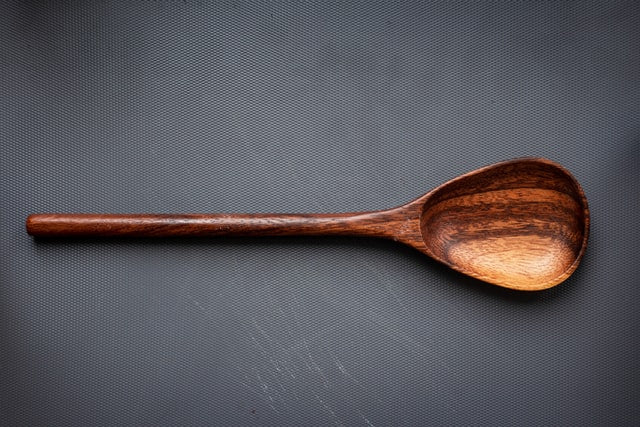
To Stir or Not To Stir...
That is the question.
stir·ring
1. causing great excitement or strong emotion; rousing.
2. moving briskly; active.
We know, we know...We keep harping on this whole stirring thing. But it's important. SO important that it causes Dave & I both great excitement and strong emotion and gets us all "stirred" up!
This week we want to talk about something so basic, elemental and important that it will change the way you cook, and hopefully how you think about cooking.
Here's what we have to say: STOP. STIRRING. Do not make us take your spoons away.
We know that we have all been taught that we need to stir. All.The.Time. But guess what? You don't! In fact, in most cases it's better if you don't. I like to challenge you to think logically and scientifically about what it is that you are doing in the kitchen. And this one makes perfect sense when you think about the process: Every time you stir you break the contact with the cooking surface and slow down the cooking process. In doing so, you also reduce the Maillard reaction (that thing that develops all the yummy browning) and compromise the flavor of your dish.
Now we aren't saying to stop stirring completely. Things in the kitchen are never that black & white. But when sauteing and browning it's just not necessary to constantly stir. And the mind blowing result is that your food will actually cook FASTER and taste BETTER!! And in the end, isn't that what we're all looking for?
Let's make a comparison that might make a little more sense. The definition of stirring is moving briskly; active. Let's apply this to life. You take a trip to the grocery store. Is it necessary to run from the car to the store? No. Because you don't need to. You're trying to catch a bus and it's pulling away; in this case you might run. We don't need to "move briskly" throughout our daily lives or in the kitchen at all times. Just when it's actually necessary.
So give it a try - practice letting your food cook for one minute more than you usually would. Then start learning what flavor differences you can make just by stirring and not stirring.
Here are a couple of guidelines to get you cooking:
When to stir:
· You should stir constantly when applying heat to items that contain dairy.
· If you are making something that requires sugar you should stir as needed to reduce burning.
· There are also instances where you may be doing an emulsification in a pan where you need to stir constantly, likes acidic pan sauces that are finished with butter.
· If you are sweating vegetables or using a cooking technique that requires no browning you should stir.
· In most cases, if you need to be stirring constantly it would be a stirring action that requires a whisk.
When NOT to stir constantly:
· When sauteing, browning meats or cooking most things in a skillet or saute pan on the stove top. Here are a couple of examples:
o Does your ground beef turn grey and sit in liquid instead of browning? Two things: crank up the heat and...stop stirring. Let your meats fully caramelize before stirring them in the pan.
o Scrambled eggs are another great example. Frequent stirring makes tough eggs. So let them start cooking and softly scramble and stir periodically.
· When doing veggies, use your spatula to make a nice even layer across the entire surface of the pan and let them go for a few minutes.
· You end up with brown in the bottom of the pan? All the better. Add a little water or wine and deglaze those delicious browned bits into your pan.
Here are a couple of recipes that we hope are helpful in demonstrating when to stir and when not to stir:
Stir Me Up:
